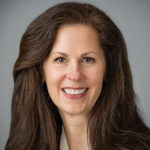
Spending countless hours on Excel sheets, although generally viewed as a staple part of financial management, takes time, energy and resources away from other vital tasks and valuable human touch points across long-term and post-acute care. As such, many senior living and life plan communities are adopting integrated financial management solutions to help their staff members focus on what matters most — their residents and overall business growth — as opposed to manual managerial duties. In addition to decreasing demands on already overstretched employees, using a single solution to meet all financial needs allows providers to be more confident and secure with their finances, streamline checkpoints and logins, simplify workforce management and focus more on resident needs.
Whether yours is a single facility or a more complex organization with multiple accounts or divisions, automated financial solutions provide a comprehensive way to manage general ledger, accounts payable, payroll, financial reporting and inventory management, as well as many other responsibilities that can maximize revenue and streamline intercompany transactions. Integrated financial management solutions incorporate many of these capabilities as modules that can be layered on top of the core program as necessary or over time as a company grows. Having the option to consolidate all of these duties into one digital solution can save time, money and friction from logging in and out of multiple systems while allowing staff and resources to be redistributed toward more value-add activities.
This integrated structure is key for organizations such as United Methodist Retirement Homes, a North Carolina-based provider of retirement living and continuing care services for more than 1,000 residents. The company often pivots from managing information such as expenses, credit and financial status in its digital general ledger, to managing fixed assets, to running payroll — all in the same system. For assets, the company has built different modules for each of its facilities, containing upwards of 8,000 assets along with pictures for easier identification. United Methodist also cut down the amount of time spent on running payroll for its 600 employees across multiple facilities and companies to just a few hours. Payroll tools designed to accommodate multiple departments, pay rates and shifts can be configured to various staffing environments, eliminating the need for outside payroll services and streamlining what used to take days.
In general, comprehensive financial management solutions allow senior living and life plan community organizations to easily navigate and organize what may seem like endless documentation, eliminating the bulkiness of excessive spreadsheets and journal entries. Using digital tools built for the unique needs of long-term care facilities means that organizations are able to maintain the highest level of compliance with organizational, federal, state and/or local mandates and have audit-acceptable documentation at the ready. Those tools also offer insights into ongoing financial health of an organization, with reports that highlight key metrics affecting revenue and cash flow, such as accounts receivable outstanding and resident move-ins and move-outs.
The vast amount of financial data collected, used and organized in long-term care extends across many departments, countless hours and extensive Excel sheets, making automation all the more important, especially in today’s environment where resources are limited. Implementing integrated financial management solutions designed for long-term care allows staff members to reallocate their time to resident-directed touch points, advancing the promise of efficient, quality care.
Ingrid Svensson is chief product officer for MatrixCare. She brings more than 25 years of experience to the role. She joined MatrixCare in 2021 after working with both innovation-intense start-ups and mature global corporations such as Wolters Kluwer, Infor and Optum. She has focused primarily on healthcare and led product management teams in both the United States and the United Kingdom that developed and launched offerings for payer and provider markets combining content with technology for point-of-care efficiencies. She holds a Master of Business Administration degree in international marketing from Marquette University and degrees in business administration and labor relations from the University of Wisconsin.
The opinions expressed in each McKnight’s Senior Living marketplace column are those of the author and are not necessarily those of McKnight’s Senior Living.
Have a column idea? See our submission guidelines here.


